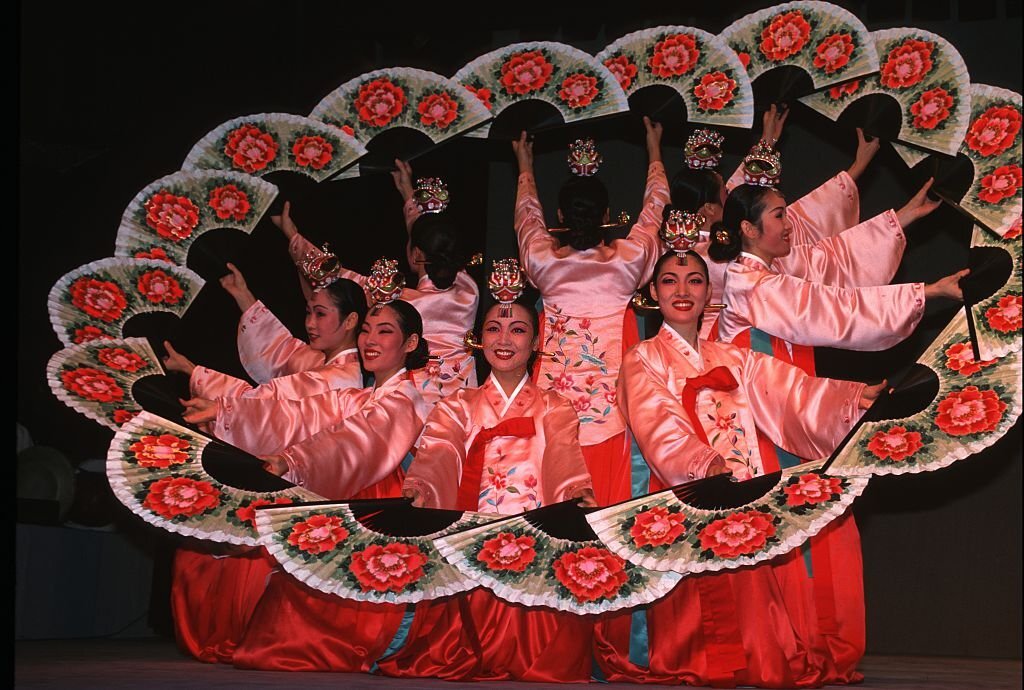With Korean pop, TV dramas, beauty products and even Korean cuisine, Hallyu (Korean wave) continues to capture and amuse people since the 1990s. While Korean trends amuse fans around the world, they also serve as a bridge to pique people’s interest in Korean culture and traditions.
Because of this, many people are even encouraged to visit the fascinating country, South Korea.
South Korea has a lot to offer: Korean heritage, authentic Korean cuisine, and unlimited entertaining things to do. You might even get to experience Korean festivals/events and witness rituals, street parades, folk games, and traditional dance performances.
One of the most well-known and unique traditional dances of Korea is the Buchaechum or Korean fan dance.
Buchaechum is not just a dance form as it also represents Korean culture. It is performed by a group of female dancers with a pair of large fans as props.
While dancing with mesmerizing movements, the performers also use their fans to create various patterns that symbolize strong love for the nation.
To this day, professional performers, dance companies, and even popular Korean idols continue to preserve the traditional dance form. Take, for example, when BTS’ Jimin delivered an iconic fan dance performance during the 2018 Melon Music Awards.
If you want to know more about the Buchaechum fan dance, let’s have a read!
The Origins of Buchaechum Fan Dance
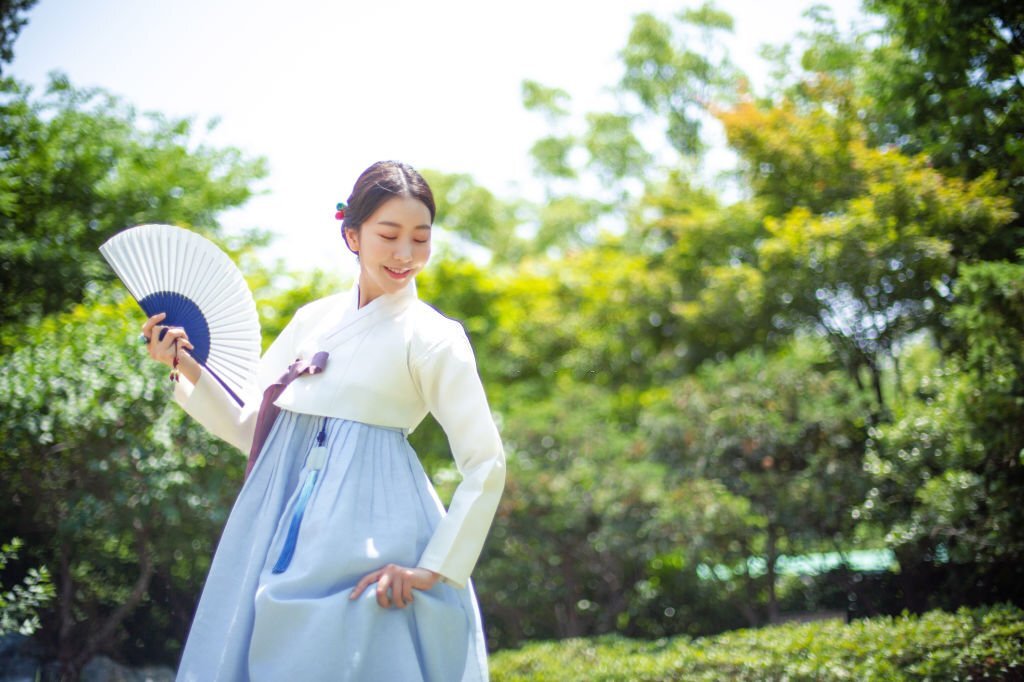
The word ‘Buchaechum’ is a combination of two Korean words: buchae (fan) and chum (dance). When combined, the word brings out its own meaning which is fan dance.
This form of Korean traditional dance was originally derived from ancient rituals in the Joseon Dynasty and later spread to other Asian countries such as China and Japan.
It is inspired by various Korean dance forms such as Shamanic ritual dances, folk dances, and other religious dance forms.
To visually showcase Korean culture and heritage to modern audience, legendary dancer Kim Baek-bong created the new Buchaechum or Korean fan dance in 1954.
She first introduced and performed Buchaechum on the stage of Seoul City Hall. In fact, she presented it to the audience as a solo dance performance, but it was reconstructed into a group dance during the Mexico Olympics in 1968.
It was also performed at the World Excellent Arts Festival and World Folk Festival. She then received domestic and international awards, and the Buchaechum fan dance started to gain support and popularity globally.
Buchaechum’s Choreography
People watch Buchaechum for its choreography. It features elegant movements and creative imagery on stage.
At the beginning of the performance, the dancers usually pose while holding their fans. As soon as the music starts, they’ll arrange themselves in slow motion to create beautiful imagery. As the performance progress, the dance movements start to get faster.
If you observe, you’ll notice that the dancers move in perfect synchronization to show one connected flow of movement.
By assembling themselves into smaller groups, they’re able to form various patterns that represent nature—blooming flowers, flapping wings of birds and butterflies, and more. They can even imitate the movement of ocean waves and motions of a moving dragon!
Apart from the colorful stage and fan patterns, another factor that makes Buchaechum seem so lively is the dancers’ lovely smile throughout the performance.
Also, each Buchaechum routine is uniquely choreographed to make the dance entertaining for the audience.
Buchaechum’s Costumes
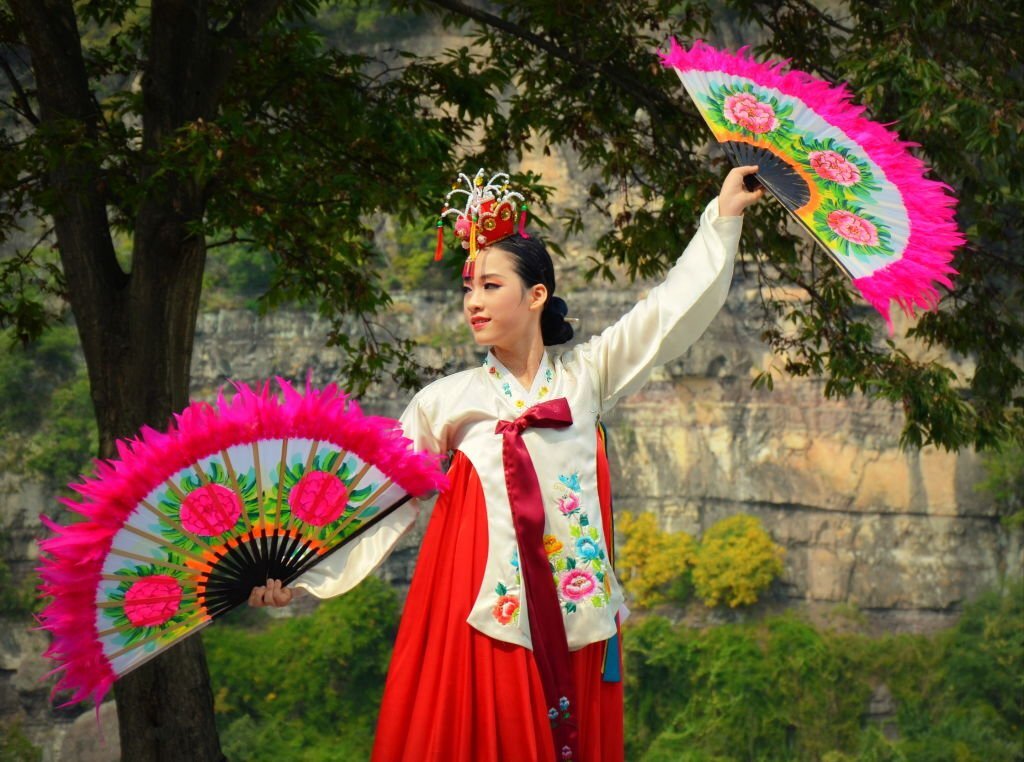
To emphasize Buchaechum’s choreography and add a pleasing visual quality on stage, the dancers wear identical costumes.
Whether it’s a solo or group performance, dancers should wear equally-designed costumes called ‘hanbok.’ It is a traditional form of Korean clothing composed of a long skirt and coat with large, flowing sleeves to add elegance to the arm movements. Each hanbok comes in bright colors and is embroidered with a phoenix and pink peonies.
The pair of fans used for the dance usually has the same color as the hanbok to help them successfully create images and highlight synchronized movements well. It is also painted or designed with the flower—pink peony—as it symbolizes good luck and prosperity.
Each dancer should also wear a headpiece called ‘jokduri.’ It is a crown-shaped golden tiara that’s traditionally worn as a ceremonial coronet for special occasions like weddings.
Buchaechum performances are usually presented on a plain, undecorated but brightly-lit stage to make the dancers’ movements and costumes stand out.
Buchaechum’s Music
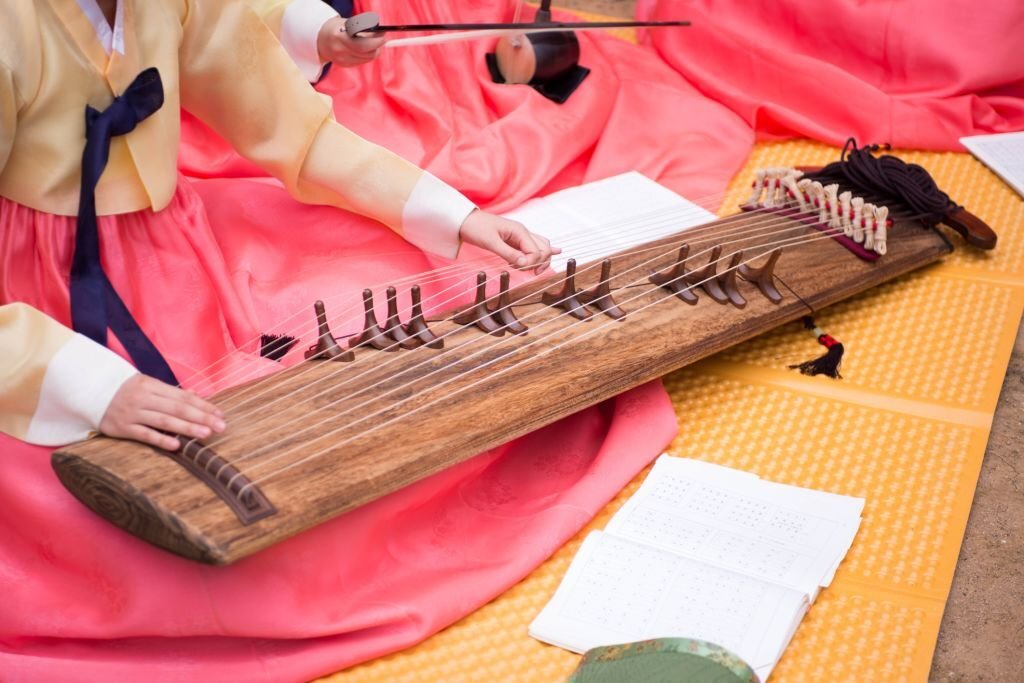
The dancers’ pace and tempo of footwork depend on the music’s rhythm, beat, and speed. For example, the dancers move in slow motion to match the slow beat of the drums. When the pulsating beat builds up quicker and louder, the dancers will move and dance faster.
Buchaechum is always accompanied by court or ritual music related to traditional activities such as fishing, farming, marriage, and ceremonies. But sanjo (instrumental solo) and minyo (folk song) are also used in some Buchaechum dance recitals.
In an instrumental solo, the soothing sound of wind instruments like daegeum (large bamboo flute) or hojok (Korean double-reed wind instrument) perfectly matches the dancers’ beautiful dance moves.
String instruments like gayageum (plucked zither) and percussion instruments such as janggu (hour-glass-shaped drum) and jing (large gong) are also used to create harmonious music that delights the ears of the audience.
When is the Buchaechum Fan Dance Performed?
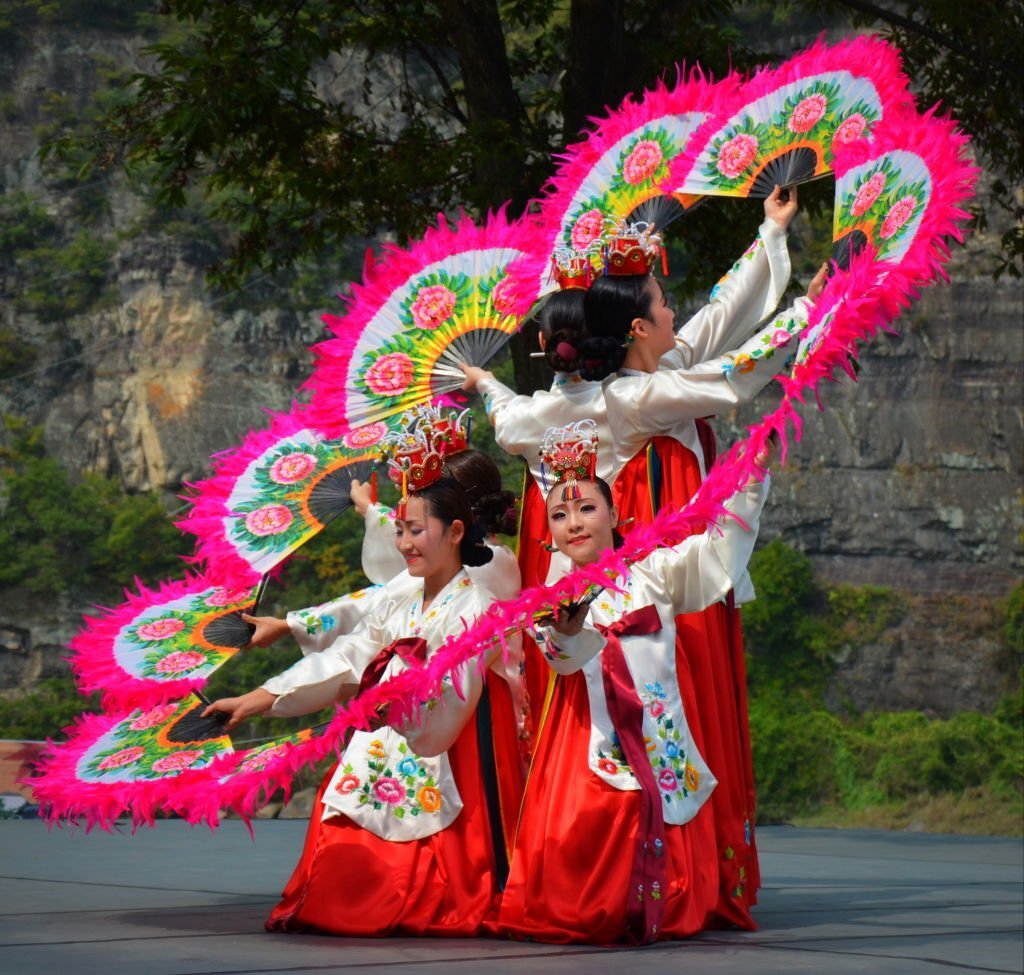
During the Joseon Dynasty in the 18th century, the Buchaechum fan dance is performed during Shamanic rituals not only to expel evil and bring prosperity but also to worship gods, ancestors, and nature spirits.
In modern Korea, it is usually performed during annual celebrations. It is also presented at Korean festivals like Lunar New Year, traditional dance competitions, and cultural arts events.
Professional Korean performers even go around the globe to perform Buchaechum and other Korean traditional dances. For instance, a well-known dance troupe in South Korea, The Little Angels, conducts international tours to perform and share the beautiful traditions, cultures, and art of Korea to the people of the world.
—
We hope this blog post about the Buchaechum fan dance has been an interesting and informative read for you!
There are many famous traditional Korean dances, but we can say that Buchaechum stands out as it is indeed unique.
From its entertaining choreography and comforting music to colorful costumes, it continues to preserve and share Korea’s culture through arts in the contemporary world.
If you’re looking for more blog posts about Korean culture, you can also read our article about Korean Superstitions.
Also, if you have comments and suggestions, feel free to share them with us in the comment section below!


